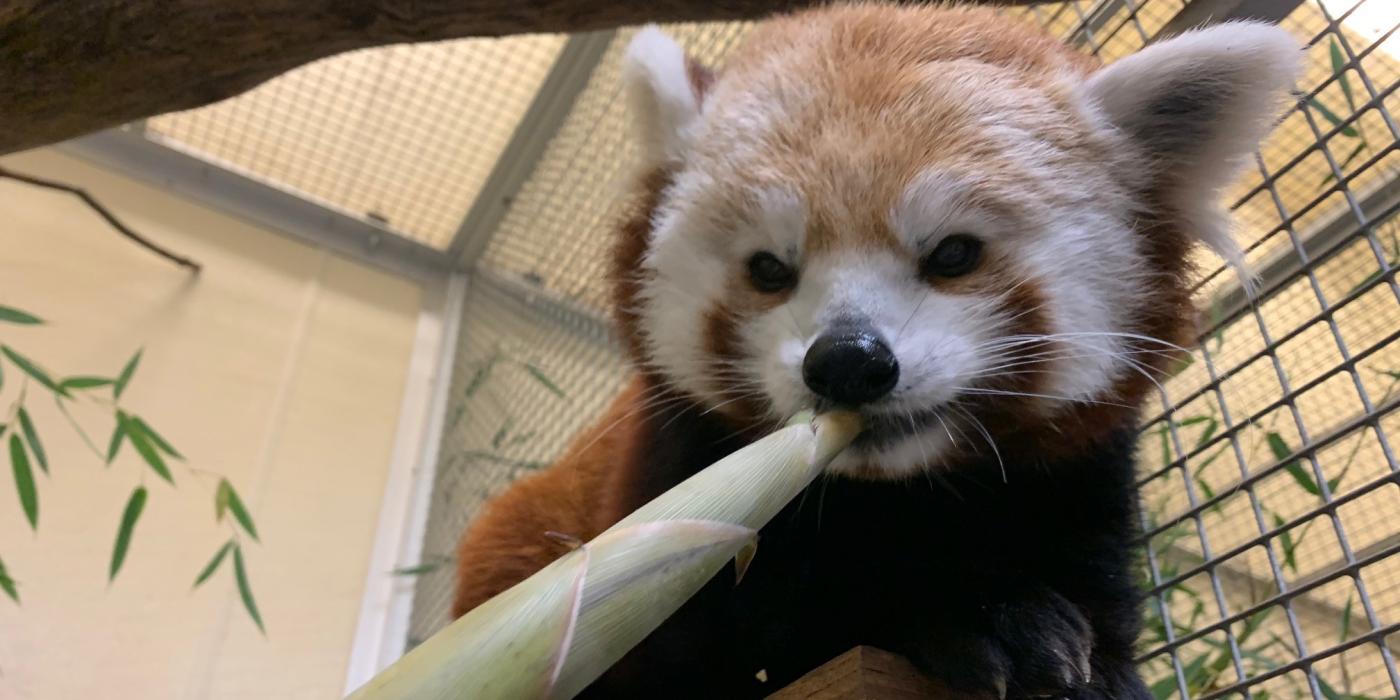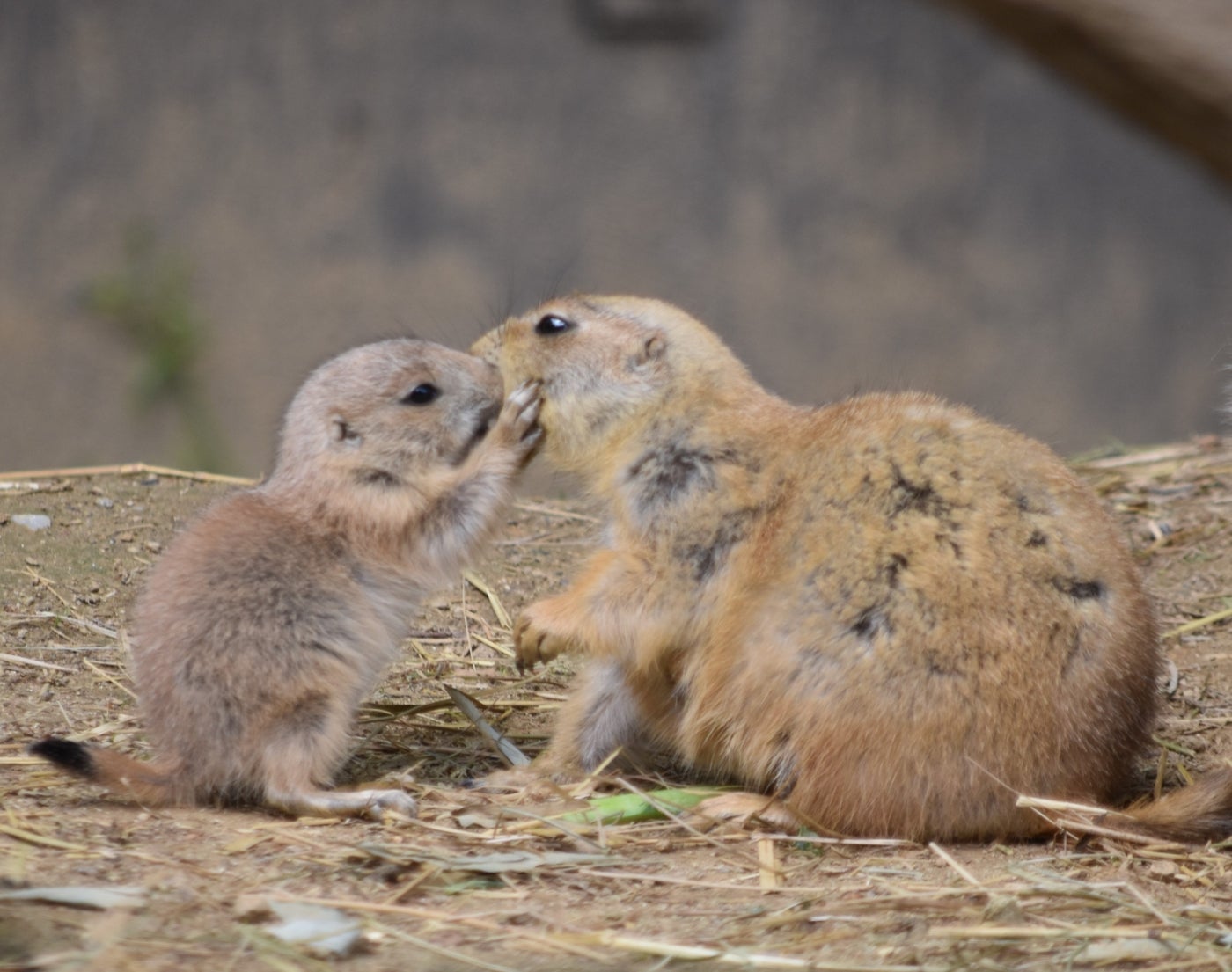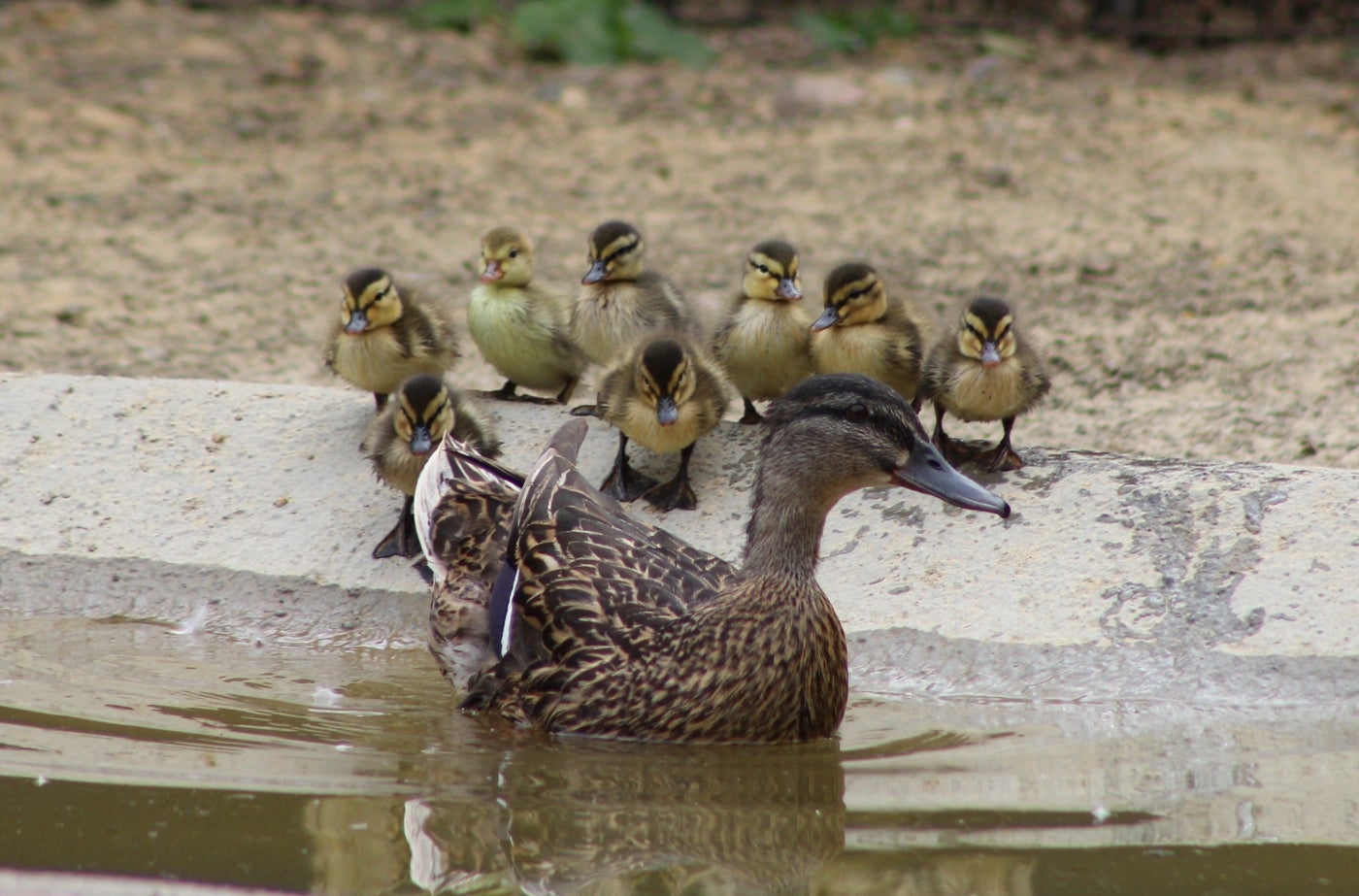Bringing the Zoo to You: May 2020

Behold a brunch between a sloth and a golden lion tamarin, catch a close-up of newborn black-footed ferret kits and get a glimpse of giant pandas gorging themselves on bamboo shoots. All of these events (and more) made for a memorable May at the Smithsonian’s National Zoo and Conservation Biology Institute. Although the Zoo remains temporarily closed to the public, our team continues to provide the best care to every one of our residents. Take a peek behind the scenes at some adorable animal antics!
Giant Panda | Asia Trail
A tale of two Tian Tians: the calm and the storm. Whether he’s quietly enjoying an afternoon fruitsicle or going toe-to-toe with a towel scented with non-toxic bubble bath, there’s no denying he’s one adorable giant panda.
When Tian Tian is in rut, he is very interested in playing with different textiles, especially if keepers add a unique scent to them. In this video, Asia Trail keepers dabbled some of his favorite bubble bath solution on a towel. Tian Tian is scent-anointing—or, as keepers call it, “washing” his ears and cheeks! For a treat, he also receives a fruitsicle—a frozen block of diluted apple, grape or pineapple juice sprinkled with chunks of apples or pears.
Two-Toed Sloth and Golden Lion Tamarin | Small Mammal House
Saturday brunch with Vlad and Izzy, and beets are on the menu! Our 33-year-old two-toed sloth and 7-year-old golden lion tamarin often dine on veggies together. Beets are a favorite food of Vlad’s. He doesn’t seem to mind as Izzy plops down on top of him, noshing on her beet. Vlad is no stranger to these precocious monkeys. Past tamarins would often jump on him while he cruised the exhibit, going for a sloth ride! Sometimes, they take his food, but keepers say he seems to enjoy the attention.

Prairie Dog | Great Cats
We know it's spring at the Zoo when the black-tailed prairie dog pups emerge from their burrow! This little guy or gal made their first appearance May 7 and stayed out just long enough for keeper Sara Colandrea to snap this sweet photo. As of this morning, the team counted 4 pups, but more could debut in the coming weeks.
Did you know there's more to a prairie dog burrow than meets the eye! The mound of earth at the entrance of burrows helps to keep the burrows from flooding. Multiple entrances allow for an escape route in the event a predator gets into the burrow. The nesting chamber is near the bottom of the burrow and has dry, grass bedding. And, there are listening chambers located near the entrance of the burrow, which allow prairie dogs to listen for potential predators before leaving the safety of the burrow.
Maned Wolf | Cheetah Conservation Station
Grab a bite to eat with our maned wolves, Mateo and Quito! Cheetah Conservation Station keeper Adam Freedman asks them to “station,” or place their feet on a rubber food dish. When they do this, he rewards them with meatballs, frozen-thawed mice and capelin fish. He holds two dishes—one for each wolf—to ensure they are receiving all of their respective prey items. This practice ensures the boys don’t fight over food and helps build trust with their keepers.
Station training allows keepers to get a close look at the animals’ body conditions, administer medications (via the food they eat), move between their indoor enclosure and outdoor habitat, and encourage them to climb upon a scale so keepers can monitor their weights. The latter a critical component of preventative healthcare with this species, which is prone to gastrointestinal conditions.
Black-Footed Ferret | Smithsonian Conservation Biology Institute
Mother's Day was extra special for keepers at the Smithsonian Conservation Biology Institute. Black-footed ferret Potpie gave birth to 6 wiggly kits May 10! Every 10 days, keepers weigh the kits to ensure they are growing and healthy. In this video, all of the kits weigh between 30 and 50 grams, which is a normal range. During the weigh-in, keepers were able to sex the kits as well. Potpie has two boys and four girls! Watch them on the webcam.
Gray Seal | American Trail
Listen up, Birdie has something to say! Our gray seal learned a new vocalization! Vocalizations are natural behaviors, which keepers reinforce and can put on a cue. Birdie is the only animal that the American Trail team has trained to give multiple vocalizations on cue.
Guinea Pig | Amazonia
Training time with our guinea pigs! Amazonia keeper Christina Castiglione extends her hand, inviting Sinchi (left) and Imilla (right) to climb upon it and receive their favorite food: lettuce! Although she could easily pick them up, Christina wants the guinea pigs have the choice to interact with her. This makes training sessions a positive experience and helps build the animals’ trust in her. Thinking about the behavior she’s asking for gives the guinea pigs some mental exercise, too!

Redhead Duck | Bird House
One of these ducklings is not like the other! Take a close look at their heads to spot the difference. The one with solid yellow feathers and a ginger crown is a redhead duck, not a mallard like its “siblings!”
While redhead parents can craft their own nests, sometimes they lay their eggs in those of other ducks. Mama mallard is none the wiser, accepting this bundle of joy as her very own. Bird House keepers welcomed the chick May 17 and report that it is eating, moving and doing well!
In fall 2021, the Smithsonian's National Zoo’s historic 1928 Bird House will transform into a first-of-its-kind attraction that immerses visitors in the annual journeys of western hemisphere birds. Learn more about the new exhibit!
Allen’s Swamp Monkey | Think Tank
Bamboo isn’t just for the pandas! Primates are also munching a special, seasonal treat right now: bamboo shoots. As these shoots come up through the ground, they are much softer than the adult bamboo. An easy and tasty treat for our Allen’s swamp monkey, Zawadi. Yum!
River Otter | American Trail
Need some #NatZooZen? Listen to the soothing sounds of our North American River otter, Emmett, blowing bubbles! Like their cousins, the sea otters, North American river otters have very thick and dense fur which help keeps them warm in cold temperatures. They also have oil glands in their skin that coats their fur and keeps them waterproofed.
Cloud Rat | Small Mammal House
It’s not a birthday without cake! Our northern Luzon giant cloud rat, Yzma, turned 9 recently. To wish her the happiest of days, Small Mammal House keepers made her a special “cake.” The recipe? Sweet potato, peanut butter and nuts, with mango candles to top it off!
Cheetah | Smithsonian Conservation Biology Institute
On May 20, our cheetah cubs received a clean bill of health from the Smithsonian Conservation Biology Institute’s veterinary team! During the exam, vets checked the cubs’ mouths and eyes, listened to their hearts and lungs, felt their bellies and administered vaccines. Shortly thereafter, they were reunited with mom Echo.
The cubs officially have names, thanks to YOU! From May 22 through 27, you’ve cast 30,535 votes…and the results are in. Meet Amabala, Jabari, Hasani and Erindi! Now that the cubs have names, keepers have bestowed them upon the cubs. To help keepers identify the cubs, they shaved a small patch of fur on their bodies. Female cub “Right Hip” received the name Amabala, which is Zulu for “spots.” Her brother “Left Hip” was named Jabari, which means “fearless” or “brave one” in Swahili. Male “Left Shoulder” also received a Swahili name—Hasani—which means “handsome.” Last but not least, their brother “Base-of-Tail” received the name Erindi, which is a protected reserve in Namibia, Africa where many cheetahs are re-released.
Watch them on the live Cheetah Cub Cam!
Giant Panda | Asia Trail
Listen to those melodious munches! It's bamboo shoot season, and the Zoo's giant pandas and red pandas are indulging in their favorite food. See and in the latest update from assistant curator Laurie Thompson. Get the scoop.
This story was featured in the June 2020 issue of National Zoo News. Want to see even more behind-the-scenes moments with our animals? Follow along on Facebook, Instagram and Twitter with the hashtag #NatZooZen.


